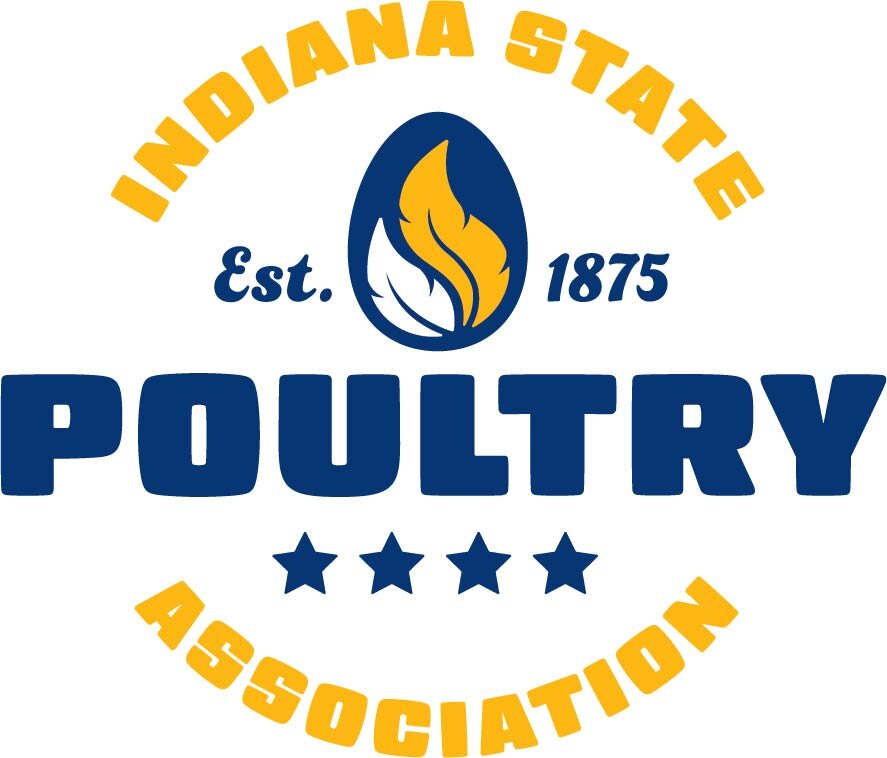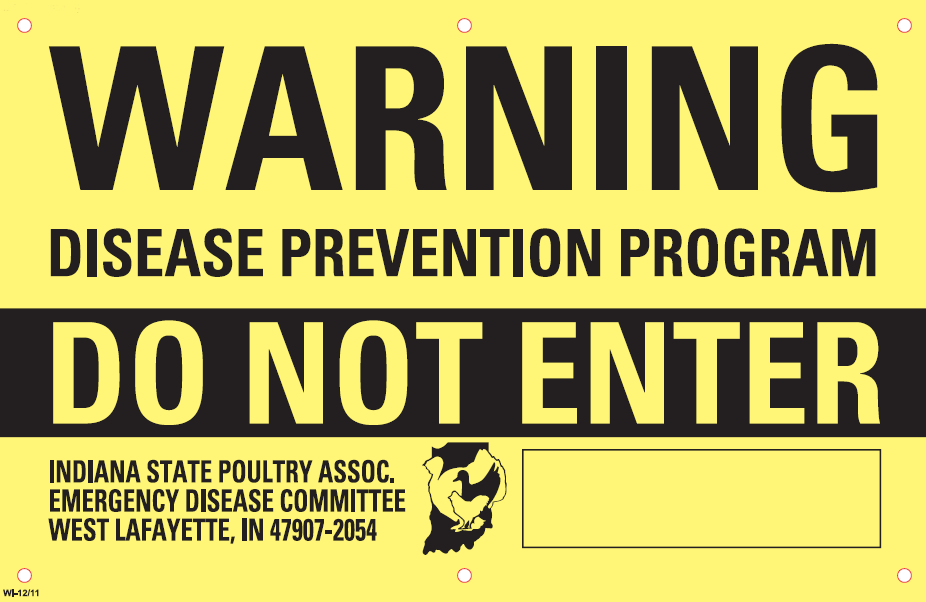MODULE FOUR: BASIC BIOSECURITY FOR YOUR FLOCK
WHAT YOU WILL LEARN IN THIS MODULE
When you have completed this module, you should:
Be able to list effective methods of disease prevention
Know how to create your own biosecurity plan
Understand isolation, traffic control, and sanitation practices that you can do to lower the risk of spreading disease
A VIDEO INTRODUCTION TO BIOSECURITY
WHY SHOULD YOU PRACTICE BIOSECURITY?
Whether you own many birds or just a few, some poultry diseases can be devastating to your flock; and, potentially to other flocks nearby. Diseases can spread from a backyard flock to a commercial flock through exposure to wildlife, parasites, or human traffic causing major losses to the operation. Fortunately, taking certain precautions can reduce the spread and effects of such diseases.
A group of actions that are used specifically to prevent the spread of diseases is called a biosecurity plan. Putting these prevention practices into place won’t guarantee that birds will never get sick, but it will significantly lower the risk to a flock and greatly reduce the risk of transmitting diseases between birds or flocks.
Every flock owner should establish a biosecurity plan to protect his or her flock. The information provided here will help you develop a plan for your flock by identifying ways in which diseases are introduced into a flock and how you can prevent them from spreading to other areas or flocks.
PREVENTION
The following activities will help decrease the risk of spreading diseases to uninfected birds:
Isolate newly acquired birds for at least 21 days after their arrival to your flock.
Isolate birds returning from fairs and exhibitions for at least 21 days.
Maintain high sanitation standards with your flock. Clean bedding frequently and check birds often for parasites.
Control the presence of rodents, insects, and wild birds.
Minimize contact with all wildlife by providing an adequate barrier.
Control access to your flock by neighbors, service people, and strangers.
Try to avoid sharing equipment. If you must share, thoroughly clean and disinfect equipment before and after use.
After indirect contact with other birds (e.g., visits to feed stores), wash your hands and change your clothing and footwear before caring for your birds.
After direct contact with other birds (e.g., visits to other farms, exhibitions), shower and change your clothing and footwear before caring for your birds.
Shower and change or disinfect clothing and footwear after contact with sick birds.
Provide adequate nutrition and shelter to your birds.
Report unusual signs of disease or high mortality to your veterinarian or regulatory authorities.
LOOK
FOR SIGNS
REPORT
SICK BIRDS
PROTECT
YOUR BIRDS
ISOLATION
Isolation refers to the confinement of animals within a controlled environment. A fence keeps your birds in, but it also keeps other animals out.
1. Establish perimeter control.
One of the best ways to isolate your birds is to install perimeter fencing. Perimeter fencing does not have to be expensive to work, but it does have to completely surround the birds and must include gates that are kept closed when not in use. If there are other birds on properties immediately adjacent to your flock, maintain a buffer zone between the two populations and prevent them from mixing.
2. Be careful when introducing new birds to your flock.
New birds can carry disease into your flock even if they are not showing clinical signs of disease.
As a general rule, all birds should be tested for diseases that threaten that species before bringing the new birds onto your property. Establish a place to segregate new birds from the established flock for at least 21 days. Birds that develop any clinical signs of disease during this quarantine period should not be introduced to your flock. Traffic flow should always be from your flock to the new birds and never in reverse without a shower and a change of clothing and footwear.
3. Avoid contact with other birds.
Anyone working with your birds or visiting your flock should not have had contact with other birds for at least 24 hours before they visit. Activities that should be avoided are hunting, visiting live bird markets, swap meets with birds or pet stores, and handling dead birds.
4. Prepare a plan for self-quarantine.
If your birds get sick, stop all visits immediately, and get birds to a certified laboratory or to your veterinarian for a diagnosis. During the time that you are waiting for a diagnosis, keep movement to a minimum. Human and equipment movement can easily spread disease.
TRAFFIC CONTROL
Traffic control includes both the traffic onto your property and the traffic patterns within the property.
1. Set up a visitor policy.
Visitors should be strictly limited. Be selective about who you let onto your property. Ask questions about where they have been and provide them with protective clothing. All visitors should sign a logbook so you can keep track of who has been on your property. Put up signs to prevent people from wandering into contact with your flock.
2. Separate clean and dirty functions.
Clean functions include bird handling, egg pickup, and feed handling. Dirty functions include manure pickup, and dead bird handling. One should not go from dirty functions to clean functions without a shower and a complete change of clothes. Usually, it’s just easier to plan your day so that you can avoid going from dirty to clean. Employees and owners should wear specific clothes to work in clean areas. These clothes and shoes should not leave the clean areas.
3. Isolate dead bird pickup and manure hauling functions.
Trucks that pick up dead birds and manure are usually doing the same thing at other properties. Because they are traveling from one farm to the next, they can easily spread disease agents. It is important to separate these activities completely from your birds. It is best if pickup can be in an area that is outside the perimeter of the property or at least away from the flock.
SANITATION
Sanitation addresses the disinfection of materials, people and equipment entering the property and the cleanliness of the personnel on the property.
1. Disinfect vehicles that enter your property.
All vehicles entering your property must be cleaned and disinfected. High pressure sprayers that can effectively remove organic material are critical to effectively remove and inactivate disease agents. Vehicle wheel wells and undercarriage must be fully cleaned and disinfected before entering your property and also upon exit. Usually, it is just easier to establish a place where vehicles can be parked outside of clean areas on your property.
2. Disinfect equipment as it arrives or leaves your property.
Equipment coming onto or leaving your property must be cleaned and disinfected. Equipment moving from dirty to clean functions must be thoroughly cleaned and disinfected.
3. Clean and disinfect between flocks.
If you do not have a separate pair of shoes to wear between visiting flocks, disinfect shoes using a footbath before entering the pen. Remove excess mud and debris off of shoes. Then scrub shoes in a tub with a long handled brush and disinfectant soap or bleach solution. A minimum of 21 days of downtime is suggested between flocks. Complete removal of bedding, feed, complete cleaning and disinfection of the housing area and inspection is critical to preventing diseases.
For additional information about biosecurity practices:
Module Quiz 4
Congratulations on completing Module 4!









